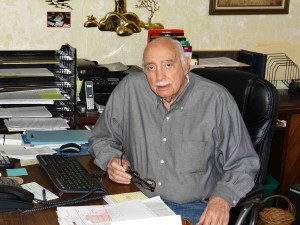by Jesse Mullins
Heavy regulation is hard enough on an oil and gas operator, but the hampering effect felt by smaller operators in West Texas and New Mexico is especially onerous. Kendrick Oil and Gas Company president Phil Kendrick, Jr., had plenty to add in this vein. (See other remarks by Kendrick in our article “When Smaller Doesn’t Mean More Manageable.”)
Kendrick takes the position that the Texas Legislature “reversed itself” when it tightened up on stipulations regarding the plugging of uneconomical wells.
“They had had a law on the books for people to not plug their wells, and to keep those wells for the future,” Kendrick told PBOG magazine. “Back in the 1980s, when the prices crashed, they passed a regulation to encourage oil operators to not plug their wells, even if those wells were uneconomical. Operators were encouraged to put them into a temporary abandoned status. As long as you were maintaining them and they weren’t causing a problem, the Legislature wanted you to keep them for potential future use.”
Because of regulations like this—in Texas and elsewhere—hundreds of thousands of wells around the United States didn’t get plugged and were available to be put back into production if and when such production became economical or if prices justified including them in a secondary recovery project, Kendrick said. “Or if the country needed those wells,” he added, remarking that these rulings were about national security as well as economics.
Thus, not only were operators not penalized for having a shut-in well, they were encouraged.
“Then, all of a sudden, they reversed that, when the big ranch owner organizations started trying to get wells plugged,” Kendrick said. “That’s when they passed the new plugging laws. It was about four years ago. After that, you could no longer keep those wells—you had to plug them. If they’d been shut in for so-many-months, you had to plug them. Everybody was scrambling to try to plug all these wells that they thought they could keep until needed.”
The legal obligation to plug abandoned wells has always been in force, and has always been a cost-of-doing-business for oil and gas operators, but the terms and time limits applied to plugging, formerly more amenable to operators, are drastically different now that the 14-P Extension has been removed. It was this removal that Kendrick describes as the Legislature’s “reversal” of its position.
The 14-P Extension, if granted to an operator, kept the operator responsible for a particular non-producing well, but the operator did not necessarily have to plug that well if he could maintain it in such a way that it did not pose a problem, Kendrick said. “So most of the operators had been shutting in wells like that” since the granting of that relief in the 1980s.
But in recent times that 14-P Extension was removed. Wells that ordinarily could have been covered by a 14-P now had to be plugged within 12 months or before the well’s next P-5 renewal date.
This turnabout greatly accelerated the business of well plugging in the Permian and surrounding regions. It altered the local economics in ways that were detrimental to small-time local operators.
“Operators had so many wells to plug that they had to start right away. Even so, sometimes it would take months to get a plugging rig. Plus, we no longer could depend on the salvage to pay for the plugging costs.”
Prior to the changeover, an operator could recoup enough with salvage to cover the cost of plugging the well—or at least could defray the cost sufficiently that the remaining costs were not a considerable hardship.
But that changed. With plugging activity accelerated, “the price of used [salvage] equipment went to nothing,” Kendrick said.
“The main thing they [regulators] want now is plug, plug, plug,” he said. “They don’t want a well shut in for any time at all. And now, it is mostly money out of our pocket to plug wells. It has gotten to the point where you have to sometimes pay people to take the equipment off your hands. And that’s to say nothing of the fines and penalties and fees that have been created ever since the Legislature decided that the Railroad Commission has to raise its own funding. Today they lack the resources to keep up with even the old rules, much less the new ones. They ‘don’t have the people,’ they say. Like with getting an injection permit. That used to take a week or so. Now it takes anywhere from three months to six months to get an injection permit.”
In brief, it’s been a rough go, not just for Kendrick but for all others like him.
“These changes have brought a financial squeeze—to the little guys,” Kendrick said. “It’s not a big deal to the big guys.”
—Jesse Mullins











